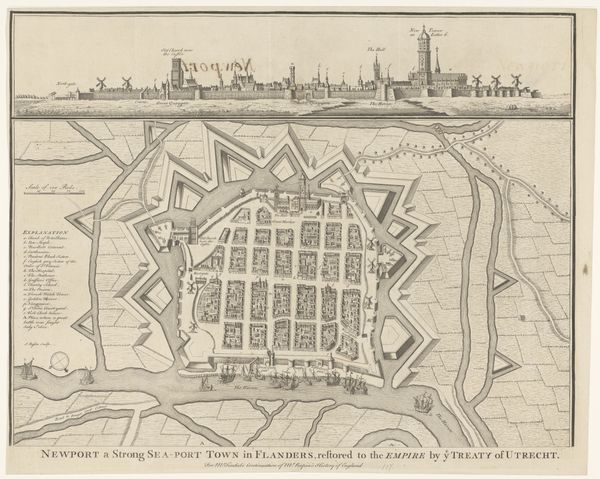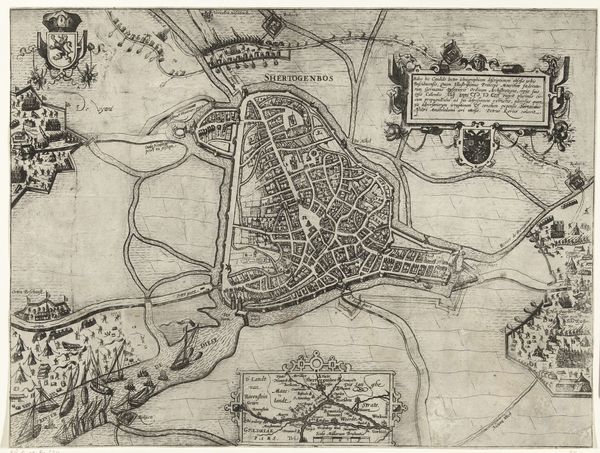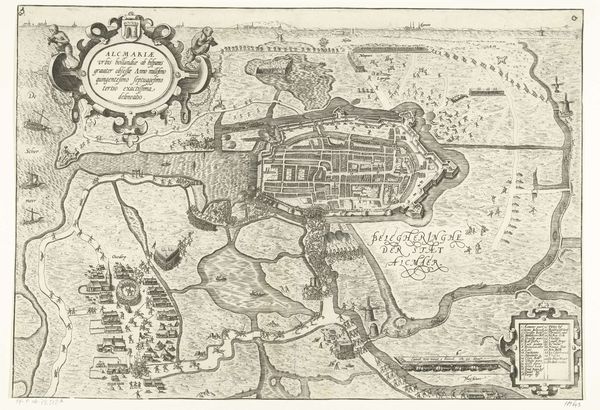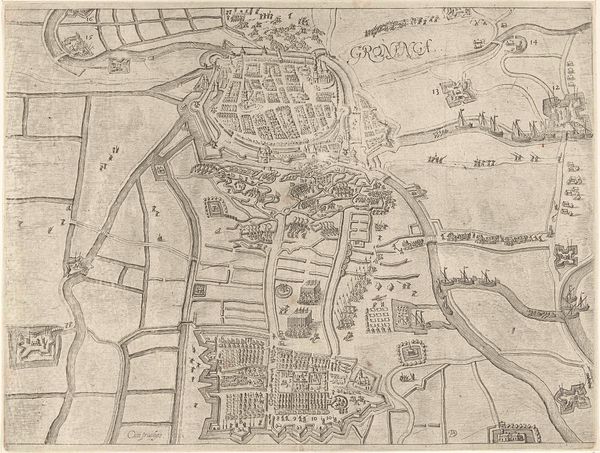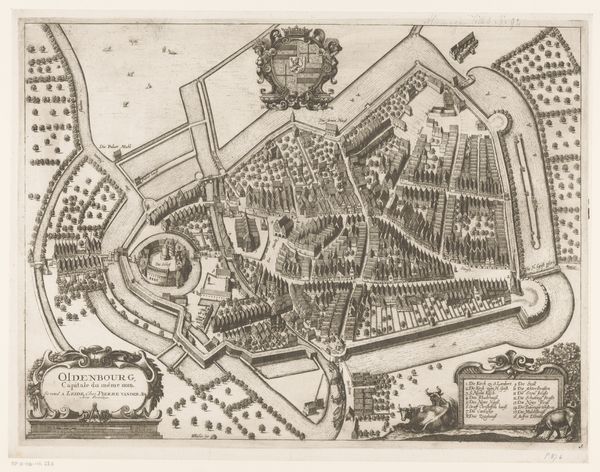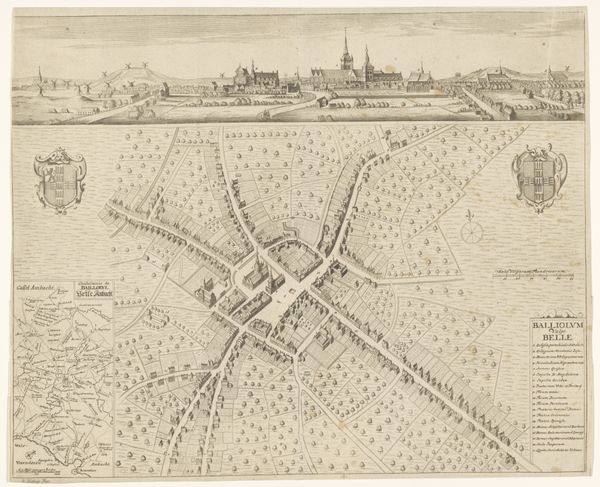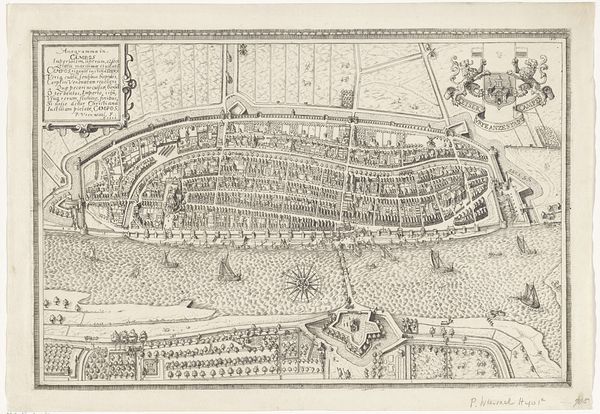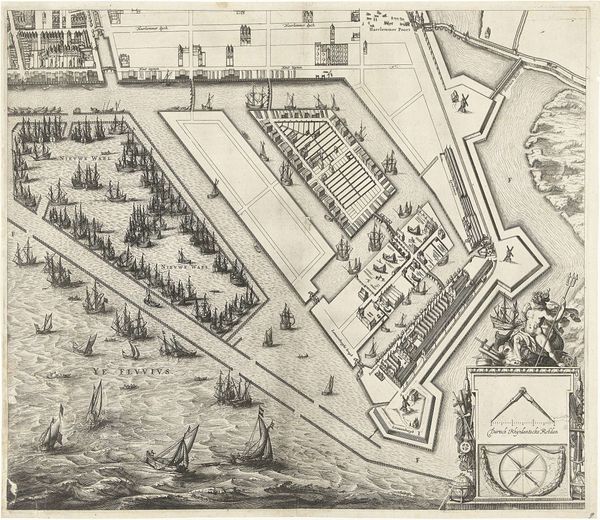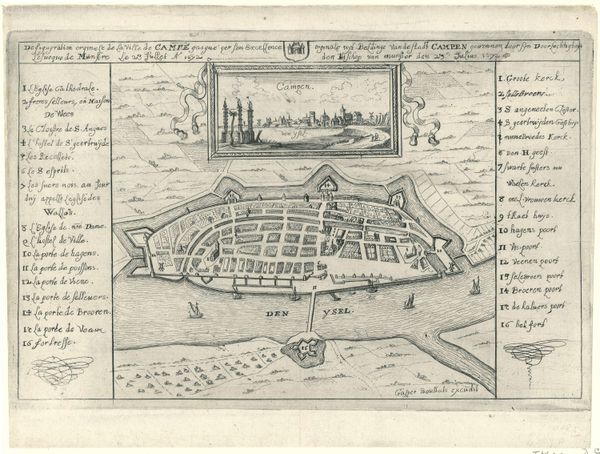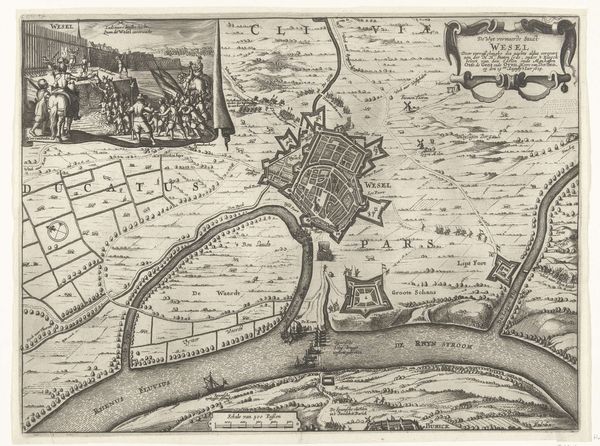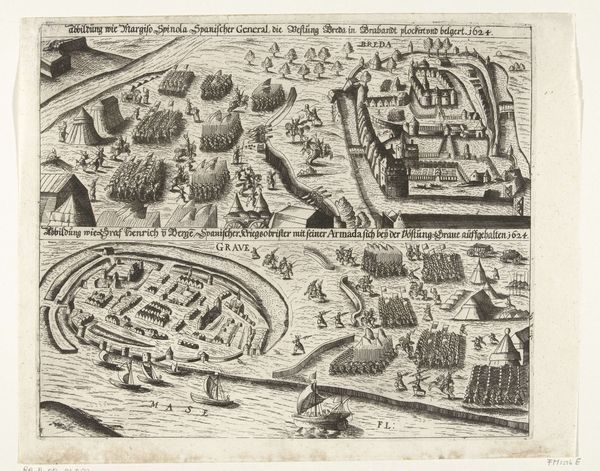
drawing, print, ink, engraving
#
drawing
#
dutch-golden-age
# print
#
pen illustration
#
old engraving style
#
landscape
#
ink
#
geometric
#
cityscape
#
engraving
Dimensions: height 377 mm, width 503 mm
Copyright: Rijks Museum: Open Domain
Editor: This is "Plattegrond en profiel van Nieuwpoort," a detailed engraving in ink by Vedastus du Plouich, created between 1641 and 1644. I’m struck by the geometric precision and the contrast between the elevated cityscape and the gridded map below. It almost feels like two different perspectives merged into one. How would you interpret the significance of a work like this during its time? Curator: That's a very perceptive observation! Considering its historical context, we need to understand that 17th-century Dutch cityscapes weren't just picturesque views; they were potent assertions of civic pride, economic power, and, most importantly, strategic control. Think about the Dutch Golden Age—a period of intense maritime trade and territorial ambitions. Maps weren’t just cartographic tools; they were instruments of power, designed to showcase a city’s defenses, infrastructure, and its overall importance in the complex web of international relations. Does seeing the piece that way influence how you respond to it? Editor: Absolutely. The precision suddenly feels less about pure aesthetics and more about strategic representation. It’s almost like a visual form of propaganda. So, how would this particular image of Nieuwpoort contribute to that agenda? Curator: Nieuwpoort was strategically vital, controlling access to waterways and acting as a key defensive point. Representing it this way, with a focus on its fortifications and organized layout, serves to project an image of strength and stability both to its own citizens and to potential adversaries. The dual perspective enhances this, showing both a comprehensive plan and a visually impressive skyline. Think about how the prominent windmills might signify economic prosperity tied to innovation and industry at the time. Editor: I hadn’t considered the windmills that way, it is such an informative method to get a clear picture about socio-political landscape. Thank you. Curator: Of course! I find it fascinating how seemingly straightforward images can reveal so much about the social and political currents of their time, once we know where to look.
Comments
No comments
Be the first to comment and join the conversation on the ultimate creative platform.
